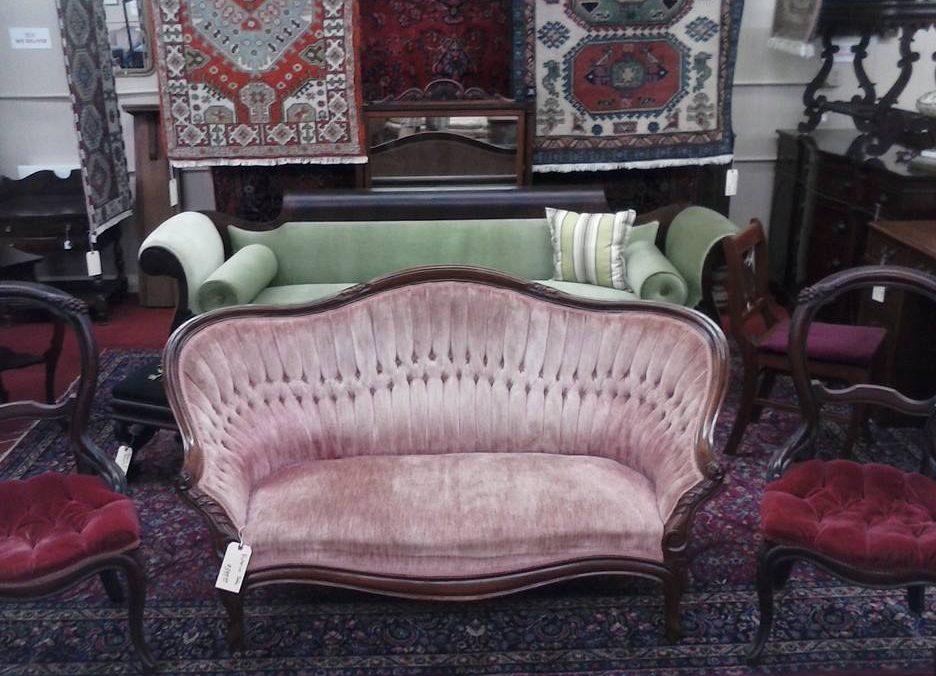
Antique furniture holds a special place in our hearts. It connects us to the past and adds a touch of timeless charm to our homes. However, navigating through the world of antique furniture can be overwhelming, especially for beginners. With numerous styles and variations to consider, it’s crucial to have a basic understanding of different antique furniture styles.
In this blog post, we’ll answer some frequently asked questions about antique furniture styles. By the end, you’ll gain a deeper appreciation for these remarkable pieces and become better equipped to identify valuable old furniture.
1. What are some popular antique furniture styles?
Antique furniture encompasses a wide range of styles from different periods in history. Some of the most well-known ones include:
a) Rococo: Originating in 18th century France, Rococo-style furniture is known for its ornate, curvaceous lines and intricate detailing.
b) Chippendale: Named after renowned English cabinetmaker Thomas Chippendale, this style emerged in the 18th century and is characterized by its elegant lines, decorative motifs, and fine craftsmanship.
c) Victorian: A dominant style during Queen Victoria’s reign (1837-1901), Victorian furniture offers opulence with its heavy proportions, richly carved details, and dark woods.
d) Art Deco: Popular in the 1920s and 1930s, Art Deco furniture embraces geometric shapes, bold colors, and modern materials like chrome and glass.
e) Mid-Century Modern: This style emerged in the mid-20th century and emphasizes clean lines, simplicity, and functionality. Influenced by Scandinavian and Bauhaus design, it remains highly sought after today.
2. What should I look for in antique furniture?
When shopping for antique furniture, it’s essential to consider a few key aspects: a) Authenticity: Look for signs of age, such as patina, wear marks, and legitimate maker’s marks or labels that verify authenticity.
b) Craftsmanship: Examine the joinery, quality of materials used, and overall construction. Well-made antique furniture will have precise detailing and solid construction methods.
c) Provenance: If possible, find out the piece’s history and previous owners. Furniture with a notable provenance may increase its value. d) Condition: Understand that minor wear is expected in antique furniture. However, avoid pieces with extensive damage or structural issues that may be difficult to repair.
3. Where can I find antique furniture?
There are several avenues to explore when searching for antique furniture:
a) Antique Stores: Visit reputable antique stores that specialize in vintage furniture. These establishments often have a curated selection of pieces from various styles and eras.
b) Antique Shows: Attending antique shows allows you to peruse collections from multiple dealers under one roof. These events attract enthusiasts, collectors, and knowledgeable sellers.
c) Online Marketplaces: Utilize online platforms like eBay or Etsy to search for antique furniture. However, be cautious when purchasing online as thorough research becomes even more critical.
d) Auction Houses: Keep an eye on local auction houses where rare and unique pieces often go up for bidding. Pre-auction viewings allow you to inspect the items beforehand.
4. How can I incorporate antique furniture into my home?
Integrating antique furniture into your home can add character and a sense of history. Here are a few tips to achieve a harmonious blend:
a) Mix and Match: Combine antique and modern pieces for an eclectic look. Pair a contemporary sofa with an antique coffee table or incorporate vintage chairs around a sleek dining table.
b) Focal Point: Make a statement by showcasing an exceptional antique piece, such as a grand Victorian armchair or an intricately carved sideboard.
c) Balance Styles: Balance the overall aesthetic by selecting complementary colors, textures, and patterns. Aim for a cohesive look that harmonizes old and new elements.
d) Knowledgeable Placement: Consider the function of each piece when placing it in your home. Don’t overcrowd the space; instead, give each item room to breathe and be appreciated.
Conclusion:
Understanding different antique furniture styles provides valuable insight into their historical significance and aesthetic qualities. Whether you’re looking to expand your knowledge or dive into the captivating world of antique furniture, familiarizing yourself with these styles is essential.
By recognizing popular antique furniture styles like Rococo, Chippendale, Victorian, Art Deco, and Mid-Century Modern, you’ll develop an eye for valuable old furniture. Remember to visit reputable antique stores, attend shows and auctions, and explore online marketplaces to find the best furniture that aligns with your preferences.
Embrace the elegance of the past by incorporating antique furniture into your home. Allow these timeless pieces to tell stories of bygone eras while adding a touch of charm and sophistication to your living space.
References:
– https://www.thesprucecrafts.com/popular-antique-furniture-styles-4102904
– https://www.homesandantiques.com/antique-furniture/how-to-buy-antiques/where-to-buy-antiques/
– https://www.invaluable.com/blog/mixing-and-matching-furniture-styles/
– https://www.housebeautiful.com/home-remodeling/interior-designers/a27193815/how-to-incorporate-antiques-home-decor/
– https://www.christies.com/features/A-guide-to-chippendale-furniture-8228-1.aspx
